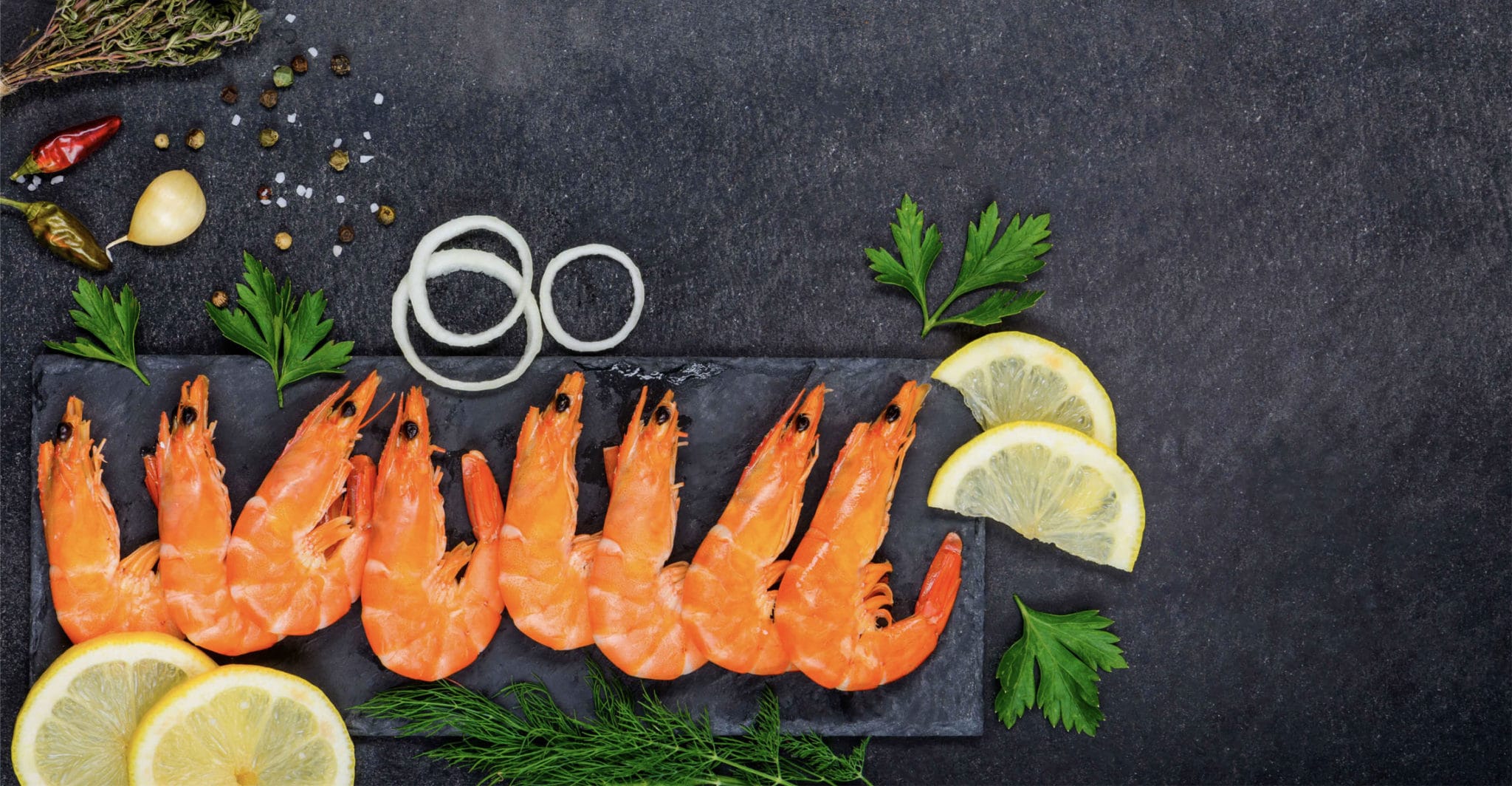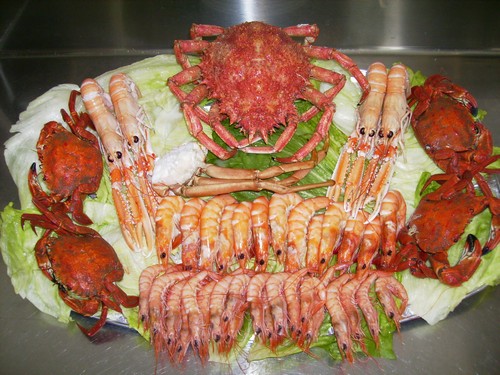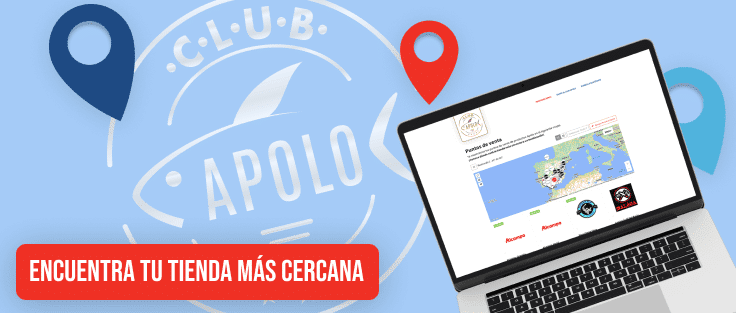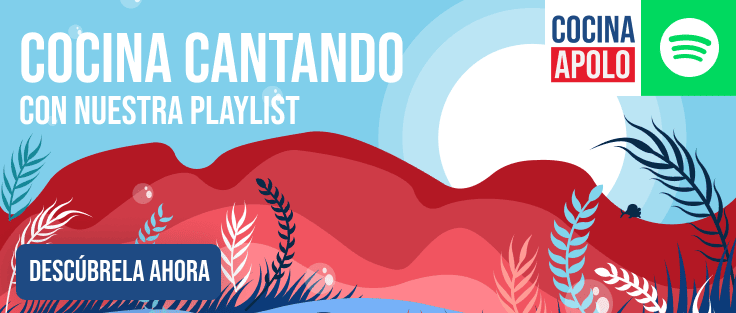Taking advantage of the fact that in the month of June we have a wide variety of seafood on offer seafood on offer at Mariscos Apolo, we address in this article one of the most frequently asked questions about cooking crustaceans: how to cook frozen seafood?
And the fact is that, although this culinary task is quite simple, it usually raises many questions, precisely because of the different ways to carry it out. Although none of them has to be wrong a priori -each cook has his or her own personal style-, there are methods that ensure very good results, avoiding loss of flavor and guaranteeing that the shellfish exoskeleton does not stick to the meat, something that should be avoided.
To defrost or not before cooking?
The first step to cook frozen seafood is to thaw it slowly, preferably in the refrigerator. Some people do not do it, but if it is thrown to the boiling water frozen it usually loses intensity in its flavor, when needing more time of cooking to defrost to the time that is done. In addition, there is a risk that the meat will stick to the shell, making it difficult to remove the shell when eating it. Therefore, it is advisable to let it defrost beforehand. To do so, it is best to use a container with a grid, so that the water and the juices it releases do not mix with the shellfish, causing its quality to diminish.
Once defrosted, place a container with water on the fire. When it starts to boil, add the seafood. Some people add bay leaves to the water, a widespread custom in some parts of Spain. In our opinion, its aroma detracts from the characteristic flavor of the seafood, hence we do not recommend it. However, we enter the realm of tastes, about which, as the popular proverb wisely warns, there is nothing written. For this reason, it is best to consult your palate when deciding whether or not to use it.
Cooking times
With these steps solved, another question remains to be answered: cooking times. This question will depend and vary depending on the size. As a general rule, you should bear in mind that when you add the shellfish, the water will stop boiling for a few minutes. As soon as it starts to boil again you will have to start timing:
- If they are small pieces, such as shrimps, prawns, prawns, crayfish or barnacles you take them out immediately as soon as the water starts boiling again. When their size is somewhat larger, they are left for about one minute on the fire after boiling again.
- If the pieces are of medium size, whether they are crayfish or crabs, when the water is boiling again, leave them between three and five minutes.
- If the seafood is large in size, as soon as it comes to the boil again, it should be left for different times depending on its weight. The pieces of half kilo should be around 10 minutes. Taking this weight as a reference, for each 100 grams more we will add about one minute, so that if it weighs 600 grams it will be left 11 minutes; if it has 700 grams, 12 minutes, and so on respectively.
The times will also depend on the proportion of water, since if the pot is overfilled the boiling will not stop when the seafood is poured in, so it may remain raw. Likewise, if too much is poured in proportion to the water, the boiling will be slowed down and the seafood may be overcooked. To avoid these problems, the amount of water and seafood should be proportional.
From hot to cold
Once cooked, the seafood should be placed in cold water with salt and ice to promote the osmosis process. In this way, the salt will be removed and the meat will come out of its shell so that it will be easy to remove the shell to start enjoying this fruit of the sea.
Pink sauce, ideal to accompany cooked seafood.
The flavor of the pink sauce combines very well with that of the crustaceans, hence it is the ideal accompaniment for the seafood cocktail. For its preparation you will need mayonnaise, ketchup, fresh orange juice and brandy or aged rum. When whisking the mixture you should keep the following proportion: for every four spoonfuls of mayonnaise, one spoonful of ketchup, half a spoonful of juice and half a spoonful of rum. Some people do without orange juice. Again, it is a matter of taste.
Generally speaking, mayonnaise-based sauces enhance the flavor of crustaceans. However, there is nothing like the original flavor of the shellfish, unique in its ability to delight the most demanding palates.







Muy buena las explicaciones
Muy acertados los consejos además de que nos garantiza un consumo seguro y sano del marisco
por supuesto es de las mejores ideas que he visto y practicado 100%,exito
Cuánto debo cocer un ostion sin concha?
Hola, el tiempo de cocción para el marisco depende del tamaño y el tipo de marisco. Para piezas grandes se calcula unos 10 minutos por kilo. Para mariscos más pequeños, por ejemplo, con un peso de unos 100 gramos, con unos 4 minutos será suficiente.
Buenas tardes, ojala me respondan, compre una bolsa con un kilo de camaron coctelero ya cocido, en un sarte puse a freir tomate y cebolla, le agrege la bolsa de camarones congelada, esta llevaba hasta hielo, el caso, es que luego ese kilo de camaron se volvio como 180 grs, de camaron, se volvieron superpequeñitos, del tamaño de un frijol, la marca es bonisimo del mar, mi pregunta es…por que se redujeron de forma super drastica?. gracias por responder.
Buenas Pepe, esta situación puede ocurrir porque la bolsa de camarones presentará dos pesos: peso neto y el peso escurrido, que es el peso real del producto excluyendo cualquier líquido que pueda contener, en este caso el agua de la congelación.
Espero y agradecería me conteste, tengo mariscos surtidos congelados y no sé cómo cocinar para aprovechar, desde ya muy agradecída. Agustina Almirón
Buenas Agustina, lo ideal para cocinarlos es descongelarlos previamente a poder ser en el frigorífico y posteriormente cocerlos. Para saber el tiempo exacto dependerá del tamaño de los mariscos. Te contamos más en nuestra entrada de blog.
hola buen día, tengo un bolsa de 1kg surtido, cuanto tiempo antes tendría que descongelarlos
Buenas Patricia, para descongelar pescado y marisco de forma correcta lo ideal es hacerlo en el frigorífico entre 12h y 24h antes de consumirlo. Colócalo sobre un recipiente con rendija para que el líquido de descongelar no toque el producto. Una vez pasado este tiempo podrá utilizarse para cocinarlo. ¡Un saludo!
Buenas tardes, cual es la proporción agua producto para la cocción correcta?? Gracias de antemano
Hola Mari Ángeles, lo ideal es utilizar una cantidad de agua que cubra el producto en el recipiente que vayamos a cocerlo. Recomendamos sumergir los productos en agua hirviendo y sazonarla a razón de 60 g de sal por cada litro de agua para que se parezca al agua de mar. Un saludo.